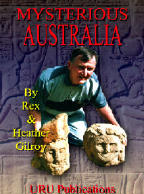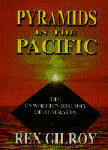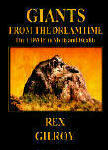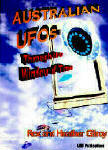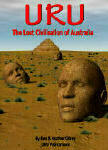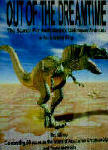We have seen how our early European settlers were made aware of the ‘hairy man’ in all his
incarnations by the Aborigines they befriended. Let us now study the ancient tribal traditions of
these mysterious hominids of Dreamtime Australia.
The myths and legends of the early tribespeople concerning the ‘hairy man’ were recorded over
a wide area of the Australian mainland as well as Tasmania by early anthropologists and other
researchers. These once again as with the early European sighting claims and close encounters, fall into
three categories, namely beings of average human height, pygmy and giant-size.
The best known ‘hairy man’ was undoubtedly that which existed throughout the eastern
Australian mountain ranges. They were known by many names depending upon the numerous dialects
spoken by the Aborigines, but all translated to the same meaning – “hairy man”. This same being exists
elsewhere in Australia under many more names, all meaning the same thing.
These Yowies were described as standing, in the case of males, at up to 2m, even 2.6m in height
at times. They were often strong, muscular-looking beings, with long head hair with hairy chests, but
otherwise they would have looked no more hairy than average modern European males today. The
females were smaller, at around 1.5m in height, with even less hair than the males but for their long
head hair. They were lighter built, with long pendulous breasts in the case of older females who had
had children. The heads of these beings were distinct from those of the Aborigines, being long and
narrow in shape [ie doliocephalic], with low foreheads and thick, projecting brow ridges.
If, as seems likely, that this ancient description of the Yowie is correct [and Aboriginal
knowledge of past species of Ice-Age times has been proved to be quite accurate], then the general
appearance of the primitive beings recalls Homo erectus, as will be further demonstrated.
According to the Aborigines, the sounds emitted by these hairy people varied from grunts to a
crude speech, and they signalled one another with loud cries, or else among hunters when in sight of
their prey, with silent gestures.
That Homo erectus was capable of speech is a subject to which we shall
return.
These ‘hairy people’ were not called so because they were covered in hair, as I have already
stated, but because they wore marsupial hide cloaks crudely sewn together, the hair of these being
responsible for the supposed ‘hairy’ appearance of the Yowies.
Our Aboriginal people are adamant that the ‘hairy people’ made fire by friction, using the same
methods as the Aborigines. They manufactured crude stone, wood and bone tools; killing animals for
food as well as feeding upon nuts, berries, roots and other vegetable food.
They were hunter-gatherers like the Aborigines, constantly on the move from one location to
the next following the food chain. In the short time that they would occupy a rock shelter they were ‘territorial’ in the sense that they might chase away others of their kind. However, and the Aborigines
were adamant about this point, the ‘hairy people’ never erected ‘territorial markers’, such as placing
broken tree limbs or stakes against tree trunks etc to ‘mark out’ their ‘territory’!
The Yowies roamed the forests and open plains in the old days, either as single individuals in
search of food, or in pairs of males, a male and female or in family groups of adult males and females
with children.
Sometimes two or three families might band together but the tribal concept as such did
not exist.
Aboriginal accounts often refer to a single individual, ie the hairy Man; the Hairy Woman; the
Doolagharl; the Pankalanka etc when in reality they were referring to an entire population.
Thus, when the tribespeople of western Victoria in the old days told early European settlers
about the Ngaut-Ngaut, The blood-sucking hairy man who was said to kill and eat any Aborigines and
whites who strayed into his domain, they were speaking of a race, a population, and Ngaut-Ngaut
beings were said to roam the countryside in search of their prey.
They were of average human height
and also known as Dyirri-Dyirritch to the Swan Hill district tribespeople, who told Europeans that
these cannibals preyed upon Aborigines throughout the Murray River district of New South
Wales/Victoria. They said that the Dyirri-Dyirritch would dig a deep trench in which he placed an upright spear, and then camouflage the top with bracken. Any Aborigines falling in would be impaled
on the spear, after which Dyirri-Dyirritch would roast and eat his victim.
Rex Gilroy
Australian Yowie Research Centre,
Katoomba, NSW
Monday 25th June 2007


